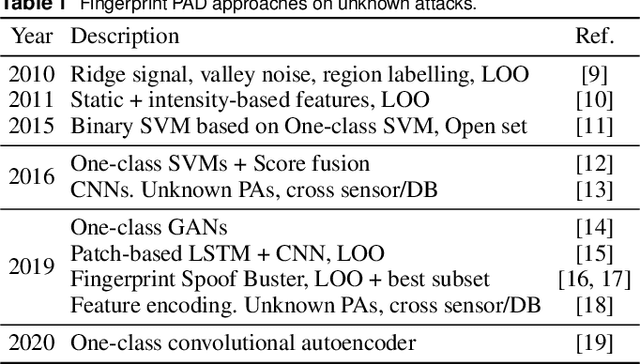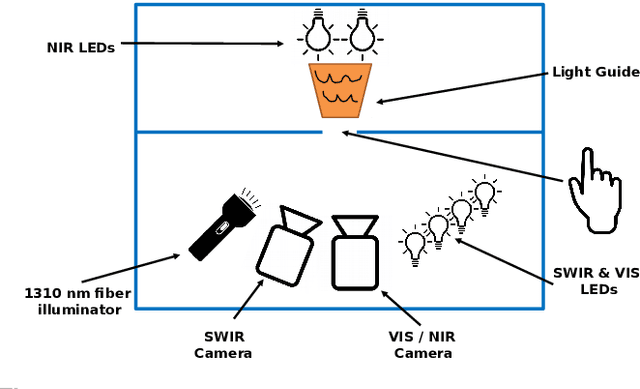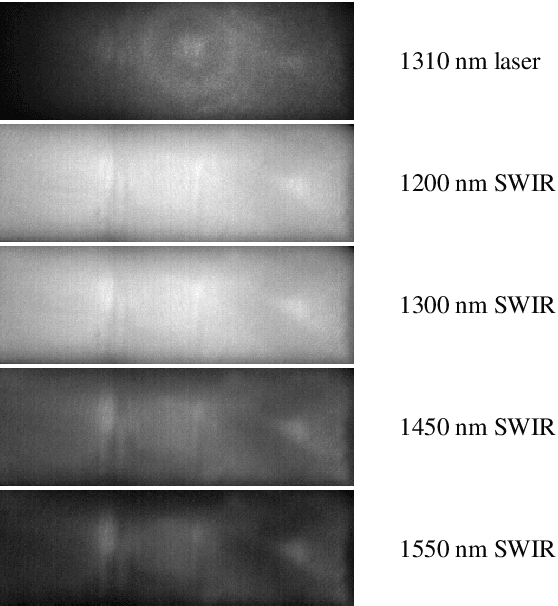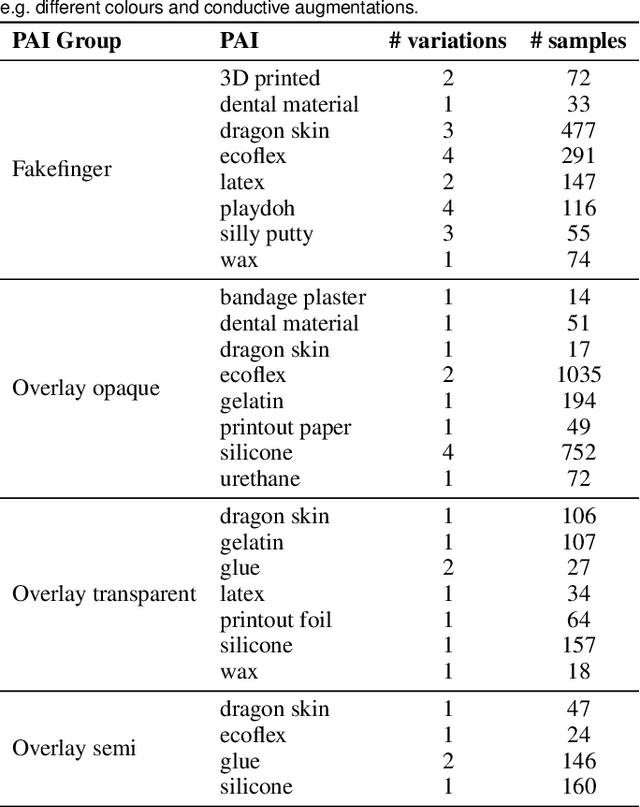On the Generalisation Capabilities of Fingerprint Presentation Attack Detection Methods in the Short Wave Infrared Domain
Paper and Code
Oct 19, 2020



Nowadays, fingerprint-based biometric recognition systems are becoming increasingly popular. However, in spite of their numerous advantages, biometric capture devices are usually exposed to the public and thus vulnerable to presentation attacks (PAs). Therefore, presentation attack detection (PAD) methods are of utmost importance in order to distinguish between bona fide and attack presentations. Due to the nearly unlimited possibilities to create new presentation attack instruments (PAIs), unknown attacks are a threat to existing PAD algorithms. This fact motivates research on generalisation capabilities in order to find PAD methods that are resilient to new attacks. In this context, we evaluate the generalisability of multiple PAD algorithms on a dataset of 19,711 bona fide and 4,339 PA samples, including 45 different PAI species. The PAD data is captured in the short wave infrared domain and the results discuss the advantages and drawbacks of this PAD technique regarding unknown attacks.
 Add to Chrome
Add to Chrome Add to Firefox
Add to Firefox Add to Edge
Add to Edge